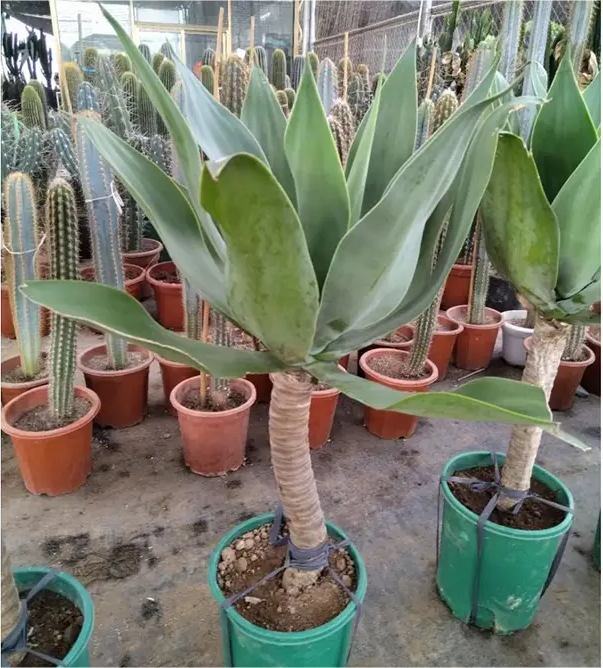Agave plants are known for their striking appearance and low maintenance requirements, making them a popular choice among plant enthusiasts. Native to arid regions, agave plants are well-adapted to thrive in dry and hot climates. In this article, we will explore how to care for an agave plant and ensure its healthy growth.
1. Sunlight: Agave plants thrive in full sunlight, so it is essential to choose a bright spot for them in your garden or home. Ideally, they should receive at least six hours of direct sunlight daily. However, if you live in a region with scorching summers, providing some shade during the peak heat hours may be beneficial.
2. Soil: Agave plants require well-draining soil to prevent root rot. They prefer sandy or loamy soil, which allows excess water to escape easily. Avoid heavy clay or compacted soil, as it retains water and can lead to fungal diseases. You can improve the drainage by adding perlite or pumice to the soil mix.
3. Watering: While agave plants are drought-tolerant, they still need regular watering, especially during the growing season. Water your agave deeply, making sure the root zone is adequately soaked. Allow the soil to dry out completely between waterings, as overwatering can rot the roots. During the winter months, reduce watering to prevent waterlogged soil.
4. Fertilization: Agave plants are not heavy feeders and can thrive in nutrient-poor soil. However, providing them with a balanced fertilizer during the growing season can promote healthier growth. Use a slow-release fertilizer or a diluted liquid fertilizer once every few months, following the manufacturer's instructions. Avoid excessive fertilization, as it can lead to weak and leggy growth.

5. Pruning: Agave plants rarely require pruning, but if you notice any dead or damaged leaves, it is recommended to remove them. Use clean and sharp gardening shears to avoid introducing any infections. Be cautious when handling agave plants, as their leaves are sharp and can cause injury.
6. Pests and Diseases: Agave plants are generally resistant to pests and diseases. However, they can occasionally be affected by common garden pests like mealybugs and spider mites. Regularly inspect your plants for any signs of infestation, such as yellowing leaves or cottony webs. If detected, treat the affected areas with insecticidal soap or neem oil, following the instructions on the product.
7. Propagation: Agave plants produce offsets, also known as "pups," around the base of the parent plant. These offsets can be carefully removed and replanted to propagate new plants. Wait until the offsets are well-established with a healthy root system before separating them. This usually occurs after a few years.
In conclusion, agave plants are versatile and unique additions to any garden or indoor space. With the right care and attention to their specific needs, you can enjoy the beauty of these plants while keeping them healthy and thriving. So go ahead and incorporate agave plants into your green collection—they are sure to add a touch of exotic charm!
Post time: Nov-23-2023